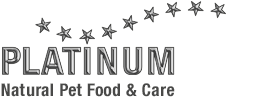
What do dog and wolf have in common?
The collective story between humans and dogs already dates back 15,000 to 20,000 years. Therefore, the dog is the oldest pet of the human. The relationship between cats and humans started about 10,000 years ago.
Until today, the transition from the wolf to the domestic dog is not finally resolved. It is assumed, that wolves connected to humans to eat their leftovers of the prey. At the same time, the human also realized the benefits. So the relationship between human and wolf evolved from predators to hunting assistants and guardians of house and farm. The human then started to tame the animals to trusting companions. With this, the fur colour, size and body shape started to change.
But also the question of where the first wolves were domesticated is still not answered. Scientists act on the assumption that the origin is located in East Asia and then spread to Europe and later to America.
This very day, pictures, sculptures and mummies of dogs in Egypt prove the early domestication of dogs. Also in the ancient Rome dogs were kept as pets or used for animal fights.
Until now, genes and instincts are shaping the behaviour and the nutrition requirements of the human’s best friend. An obvious mutuality is e.g. the pack mentality. Both animals are organized in groups, which show specific hierarchies. In the family pack, the dog acknowledges the owner as “top dog” and accepts their leading role – even in the eating order. Also the leading wolf of the pack guides the way and ensures their survival. The pack role is important for both species. Therefore, at home and in wilderness the dog tries to get to the top of the group over and over again; the “top dog” has to prove itself continuously.
The distinctive sense of smell and hearing is also bonding both species. In addition, the body language correlates with the ancestor’s. The dog shows its humble behaviour to his conspecific by kneeling to the ground. At a threatening fight the dog rears up and threatens his enemy with a strong body structure.
But there are also behaviours, that can’t be connected to the ancestor at first sight. It can be observed, that dogs often go in circles before laying down into the dog basket. Originally, the grass or snow was pressed down before lying down. They also like to wallow in strong smelling substances to cover their body odour, even though they don’t need to hunt their prey anymore.
From the everyday life, almost every dog owner knows that the dog heavily shakes a toy or other things with his mouth. This behaviour also can be lead back to the wolf. It is a typical hunting behaviour where the wolf broke the neck of the prey animal.
Also anatomic dogs and wolves have a lot in common, both outside (depending on the breed) and inside. The digestive tract of a dog is designed for a carnivore. Like the wolf, the dog needs a balanced diet, but not only meat. If the wolf hunts down a prey animal, it is offering him everything he needs for a species-appropriated nutrition: meat plus plants (carbohydrates, vegetables, fruits, herbs) and minerals that are found pre-digested and exploitable in the stomach of the prey.
Besides the hunt of the prey on land, scientists found out that wolves are also excellent hunters in water. In doing so, not only the riskless hunt (in comparison to hunting for game) is an important benefit. Especially the energetic benefits are the reason why fish is on the wolf’s menu. Fish offers essential fats and energy and therefore has a high nutritional value. Dogs also love fresh fish (e.g. in the shape of wet food) in their bowls.
The closeness to their ancestors also has an effect on the nutrition of the dog and the selection of a species-appropriated dog food and its mixture. The dog belongs like the wolf to the species of carnivores. Its metabolism and digestion are designed for big amounts of animal protein. However, only feeding meat wouldn’t be fully-fledged, because the wolf also absorbs fruits, vegetables, grass and roots depending on the food supply. They deliver vitamins and fibre that support a healthy action of the bowels. PLATINUM dog food orientates itself on the ideal of nature: fresh meat is the main component and is supplemented by plants and carbohydrates.














































